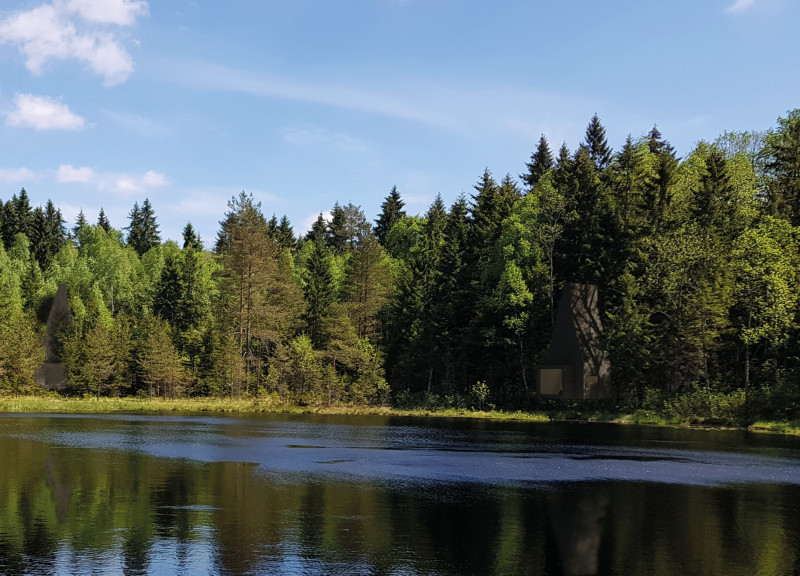5 key facts about this project
In this project, the cabin serves as a retreat for meditation and reflection. The design incorporates a minimalistic approach, ensuring that the structure has a reduced footprint and minimizes disturbance to the surrounding landscape. The elevated position of the cabin aids in durability against seasonal weather while also providing occupants with views of the forest canopy.
Unique Spatial Configuration and Design Elements
What sets the Self-Reflective Cabin apart from conventional designs is its careful consideration of spatial organization and the use of innovative materials. The structure employs an extensive use of locally sourced wood and plywood for interior cladding, fostering a warm atmosphere while ensuring sustainability. Structural components such as treated wood and zinc elements form an essential part of the design, providing strength and resilience against environmental factors.
The cabin features a three-layer lamella facade, which not only enhances thermal regulation but also contributes to the aesthetic detail of the structure. The roof's distinct geometry facilitates effective drainage, further demonstrating a thoughtful approach to environmental conditions. Large operable windows are integrated to promote natural ventilation and visual access to the surrounding landscape, reinforcing the connection between indoor and outdoor spaces.
Sustainable Building Practices and Performance
The Self-Reflective Cabin stands out for its emphasis on sustainable building practices and energy efficiency. An extensive insulation system is incorporated to provide effective climate control throughout the different seasons. The strategic positioning of the structure allows for optimal sunlight exposure while ensuring shade during peak heat periods.
The project also includes functional systems for water storage and heating, which emphasize practicality without compromising ecological integrity. By maintaining a focus on locality and sustainability, the design fosters a deeper appreciation for nature while fulfilling the essential needs of its users.
For a comprehensive understanding of the architectural plans, sections, and designs associated with the Self-Reflective Cabin, readers are encouraged to explore the project presentation for further details and insights into its architectural ideas.


























